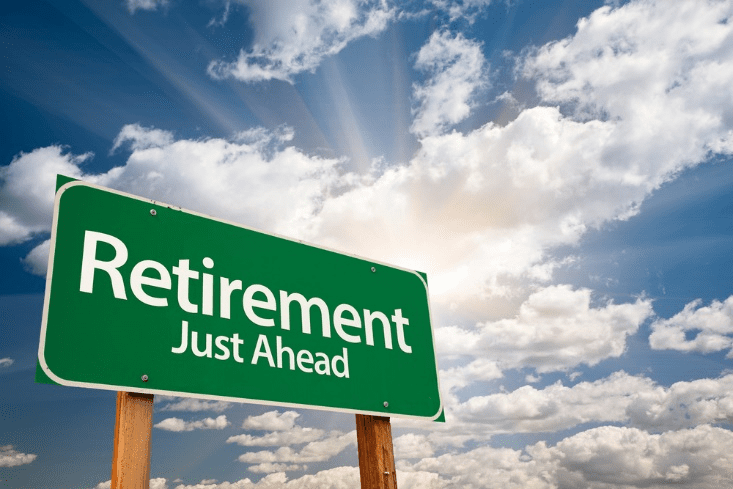Last updated Apr. 18, 2023 by Peter Jakes
There comes the point when you’re weak and incapable of working — it’s retirement time! It’s impossible to work all through your life. The big question is, “Do you have a plan for your retirement?” and “How’s life after retirement going to be like?”
In a survey conducted by GOBankingRates.com, 64% of workers surveyed had less than $10,000 saved toward retirement. Worse yet, nearly 40% of workers — age 55 and older — reported no retirement savings. Does this surprise you? It gets to show how very unprepared people are about their retirement.
These stats indicate that over half of U.S. retirees are financially vulnerable after retirement. In this article “Steps to take 10 years before retirement” I will take time to explain what you need to do so your retirement days are financially fulfilling.
How Do I Prepare for My Retirement?
Begin by visualizing the retirement you desire. For example, will you volunteer, work part-time, or travel? After that, create a realistic image of the financial resources you’ll need and see if you have enough to back up your strategy.
If you discover a gap, consider how you’ll get the additional assets you require or alter your goal to fit your resources. Examine your present expenses to uncover discretionary things that you can remove to leave extra funds for savings.
The rest of this article informs you about the money moves to make before retirement.
See a related article: 21 Easy Steps To Achieve Financial Freedom Fast
12 Things You Should Start Doing 10 Years Before Your Retirement

Here are some crucial steps to take ten years before retiring that can make all the difference in whether your retirement will be a dream come true or a nightmare.
1. Assess Your Current Situation
Nobody wants to admit they are financially unprepared for retirement. Still, an honest assessment of where you are is a crucial step to take 10 years before retirement. Now is critical to developing a strategy that accurately addresses any shortfalls.
Calculate the amount of money you have in retirement accounts. Individual retirement accounts (IRAs) and company retirement plans, such as a 401(k) or 403(b), should be included. Add taxable accounts if you plan to use them only for retirement, but don’t include money set aside for emergencies or major expenditures like a new car.
2. Set a Target Retirement Age
If you are 10 years short of retirement, you might be as young as 45 if you are financially prepared and anxious to stop working, or as elderly as 65 or 70 if you are not. People who live longer should plan for retirement as though they’ll need to support a retirement that may last three decades or more.
Gary, a Georgia State resident, never planned for his retirement. He felt that at whatever age he retires, he will be well-off. Due to the Covid-19 pandemic, Gary was laid off.
He found it difficult to get jobs after, which led to his early retirement. If Gary had set his age of retirement, he may not have been too surprised when employers preferred younger and more energetic employees.
Planning for retirement entails assessing not just your anticipated spending patterns in retirement but also the length of your retirement. For example, a retirement that lasts 30 to 40 years differs significantly from one that lasts only half that long.
While many employees aspire to retire early, a reasonable target retirement date strikes a compromise between the size of the retirement portfolio and the length of retirement that the nest egg can sustain.

3. Identify Sources of Income
Most monthly income in retirement would come from existing retirement assets, but it’s not the only possible source. Additional income can come from various sources other than savings, and you should think about it.
You can also check if you’re eligible for Social Security benefits determined by career earnings, work history, and the age at which benefits are sought.
This benefit is usually the lone retirement asset for workers who do not have any existing retirement savings. The government’s Social Security website has a retirement benefit calculator that might help you figure out how much money you’ll get. You can also check the Borrowell Retirement calculator.
If you’re lucky enough to have a pension plan, you should factor in the monthly income from that asset. Then, while retired, you can also add up earnings from part-time employment.
4. Pay Down Debt
Downsize your debt as little as feasible when planning to retire. High-interest credit cards, a mortgage, lines of credit, and even vehicle loans fall into this category. You don’t want to spend your retirement funds servicing debts.
“Expensive debt” should be tackled first.
There can be “good” debt as well as “bad” debt. You may be able to increase your retirement savings if you only have “good” debts like your car and mortgage, Poorman says.
If you haven’t already, make a list of all of your debts, along with the interest rates associated with each. Priority should be given to debt with a high-interest rate, such as a typical credit card, in order to save money. In his words, “the interest you pay may be higher than the return you’d earn on saving those same dollars.”.
If you can, pay more than the bare minimum each month. Move on to the next loan on your list once you’ve paid off the one with the highest interest rate. As soon as you’ve finished? Consider saving for retirement with the same amount you used to pay off your debt.
5. Consider Your Retirement Goals
This step is an important consideration in retirement planning. A retiree who wants to downsize to a smaller home and live a peaceful, modest lifestyle would have different financial demands than one who wants to travel widely.
Create a monthly budget to estimate typical retirement expenses, including housing, food, dining out, and recreational activities.

6. Consider Future Medical Costs
Considering your medical costs is one of the steps to take 10 years before retirement. Medicare will cover the bulk of your normal healthcare expenditures if you retire at age 65 or older, but explore additional coverage to help pay for non-routine healthcare costs, which will climb as you get older. Furthermore, most long-term care expenditures are not covered by Medicare.
Consider purchasing long-term care insurance to help preserve your retirement savings by covering costs such as home health aides. Your rates will be lower if you get coverage now rather than waiting a few years, and you will be less likely to be turned down by insurers.
Contribute the maximum amount to your health savings account. The money is tax-free, but it may be subject to income tax and penalties if not utilized for eligible medical expenditures. On the other hand, the money you don’t spend may collect and multiply tax-free until you need it in retirement.
7. Confront Any Shortfall
All of the figures you’ve gathered so far should help you answer the most critical question: Do your retirement assets surpass the amount you’ll need to support your retirement adequately?
If you answered yes, it’s critical to continue contributing to your retirement accounts to stay on schedule. If you answered no, you’ll need to find out how to bridge the gap.
With ten years before retirement, individuals behind schedule must find new methods to supplement their resources. First, however, you’ll probably need to boost your savings rate by cutting back on wasteful expenditure to make significant adjustments.
It’s critical to determine how much extra you need to save to make up the difference and adjust your IRA and 401(k) contributions accordingly.
Automatic savings alternatives such as paycheck or bank account deductions are frequently great for staying on track with your savings. High-risk investments make more sense while you’re younger, but they’re usually a bad idea in retirement.
8. Assess Your Risk Tolerance
At different ages, risk tolerance varies for different people. Assessing the level of your risk appetite is one of the steps to take 10 years before retirement. Therefore, portfolio allocations should gradually become more conservative as employees near retirement age to protect accrued resources.
With only a few years till retirement, a bear market might derail your ambitions to leave working on schedule. Therefore, retirement portfolios should predominantly consist of high-quality, dividend-paying equities and investment-grade bonds to provide continuous growth and income.
It may be tempting to increase your portfolio risk to get above-average returns if you’re behind on your finances. Unfortunately, investors who pursue a high-risk strategy may exacerbate the problem by committing to riskier assets at the wrong moment. While this method can work on occasion, it frequently produces mixed outcomes.
Depending on your choices and tolerance for risk, some more risks may be desirable, but taking too much risk can be harmful. For the risk-tolerant, increasing equity allocations by 10% may be suitable in this circumstance.
9. Adjust Your Investment Portfolio
It is OK to take on more financial risk when you are 30 or 40 since your time horizon for utilizing that money was several years away. However, as you approach retirement age, your investment risk tolerance should shift away from growth (equities) and toward protection (balanced and fixed income assets, bonds) so you can start receiving income from your investments sooner.
You’ll need some growth in your portfolio to keep up with inflation, especially if you plan to live to a ripe old age.
10. Investment Diversification as steps to take 10 years before retirement
Although it may be tempting to avoid stocks to limit risk, the growth potential of equities is still significant at this point in life. Therefore, maintain a well-balanced portfolio of stocks, bonds, mutual funds, and other assets that meets your risk appetite, investment time horizon, and liquidity requirements.
By examining your income sources long before retirement, you’ll be able to make any required adjustments.
A well-balanced investment portfolio for retirement may help you weather market downturns and provide the income you’ll need to sustain costs for a retirement that might last more than three decades.
11. Maximize Your Registered Savings Plans
If you have unused contribution capacity in your registered plans, your tax-free savings account (TFSA) growth is tax-free, so put it there first.
After that, consider using all of your registered retirement savings plan (RRSP) contribution capacity to maximize your tax deduction and refund. Then put your tax refund to use.
12. Consult a Financial Advisor
Only a few people are experts in the field of money management. Therefore, consulting a financial adviser or planner may be a good idea for individuals who want a professional to manage their circumstances.
A smart planner ensures that a retirement portfolio has a risk-appropriate asset allocation and, in some situations, may also help with estate planning.
Planners charge about 1% of total assets handled yearly on average for their services. So choose a compensated planner based on the amount of the portfolio they manage rather than one paid based on the things they promote.

It’s Never Too Late to Get Started
It’s easy to forget about your retirement plans when it’s a decade away. However, it’s critical to prepare ahead of time and set reasonable objectives so that time works in your favor and you can enjoy the retirement you’ve always desired.
Don’t know exactly how much is enough for your retirement? Check out this article.
Further Reading
We’ve provided a comprehensive review in this article if you’re searching for “Steps to take for your retirement.” At paypant.com, we are committed to helping you make, save and manage money. Below are some extra resources that can help you take charge of your financial life.
- 57 Best Low-Cost Small Business Ideas To Start On The Side (2022)
- 65 Clever Money Hacks That Will Save You Hundreds of dollars
- Monitor Your Daily Habit checker (Download Sheet for Free)
- How to Make a Personal Budget in 6 Easy Steps?
- What are IRS Penalties for Late Filing and Payment of Federal Taxes






